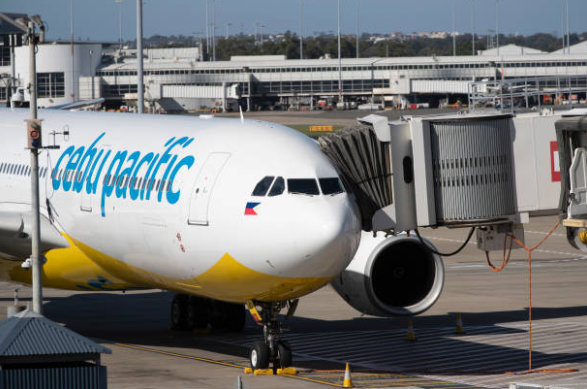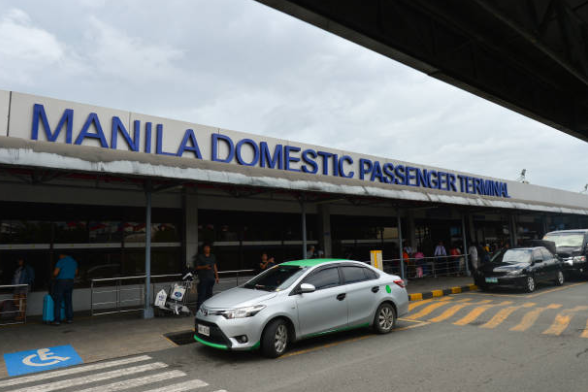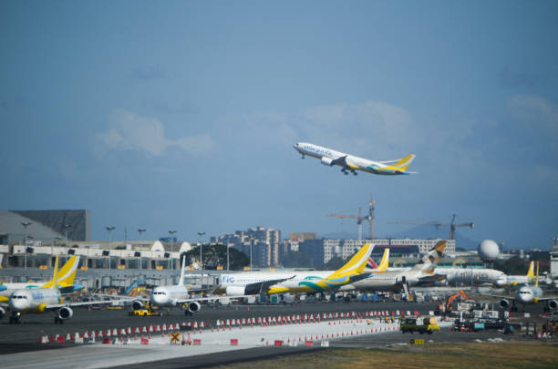Today, I’d like to share my experience flying with Cebu Pacific in economy class from Manila to Puerto Princesa. This was one of the flights during my short trip, and Cebu Pacific had something unique that piqued my interest—they hosted a quiz with special prizes! So, here’s a brief account of my journey with Cebu Pacific.
About Cebu Pacific
Cebu Pacific, officially known as Cebu Air, Inc., is a low-cost airline operating in the Philippines. It is based at Ninoy Aquino International Airport in Pasay City, Metro Manila. Cebu Pacific is one of the largest private airlines in the Philippines and is the third-largest low-cost carrier in Southeast Asia, following AirAsia and Lion Air. They offer a range of flights covering both domestic and international destinations.
With a relatively young fleet, Cebu Pacific has its main hub at Ninoy Aquino International Airport in Manila, along with several other hubs across the Philippines, including Mactan-Cebu International Airport, Zamboanga International Airport, Davao-Francisco Bangoy International Airport, and Diosdado Macapagal International Airport.
Cebu Pacific is a subsidiary of JG Summit Holdings, controlled by the Gokongwei family, one of the wealthiest families in the Philippines. The airline is currently led by Lance Gokongwei, the heir of JG Summit’s founder, John Gokongwei. With over 1,000 employees at the time, Cebu Pacific has grown to become one of the leaders in the domestic aviation industry in the Philippines, serving many destinations with the highest flight frequencies.
A Brief History

Cebu Pacific was founded on August 26, 1988, but only began operations on March 8, 1996. The airline received its franchise from the Philippine government under Republic Act No. 7151, which was approved on August 30, 1991. Initially, Cebu Pacific operated only domestic flights after the Philippine government deregulated the market.
However, Cebu Pacific’s journey wasn’t always smooth. In 1998, they were forced to temporarily suspend operations after an accident involving one of their aircraft. They resumed operations after receiving re-certification from aviation authorities.
In the 2000s, Cebu Pacific was granted permission to operate international flights, opening the door to expansion into various countries in Asia, including Malaysia, Indonesia, Singapore, Thailand, South Korea, Hong Kong, and Guam.
Journey to Puerto Princesa

Now, let’s focus on my specific journey from Manila to Puerto Princesa with Cebu Pacific. This was one leg of my short trip, and I was excited to see what the airline had to offer.
The journey began at Ninoy Aquino International Airport in Manila. I had already checked in online, so I just arrived at the airport a few hours before departure to go through security and wait for my flight.
When I reached the departure gate, I noticed an information board announcing a quiz organized by Cebu Pacific with attractive prizes. The concept was simple: they would ask passengers a few questions, and if you answered correctly, you had a chance to win a prize.
The questions were related to the airline, destinations, and other interesting facts. It was a creative way to entertain passengers during the journey.
Flight and Service

Upon boarding the plane, I was relieved to see a clean and well-maintained interior. I sat in economy class, and while the legroom was limited, it was something to be expected in economy class.
Overall, the flight went smoothly without any issues. The Cebu Pacific cabin crew was friendly and helpful. They provided essential information to passengers and answered questions patiently.
During the flight, I ordered food and drinks from the available menu. Cebu Pacific offers a variety of snacks and drinks at reasonable prices. The food I ordered was tasty and kept me satisfied during the journey.
Arrival in Puerto Princesa
After a few hours of a comfortable flight, we finally arrived at Puerto Princesa International Airport. The landing was smooth, and we were able to disembark quickly.
Upon arrival at the airport, I was pleased to see how efficient the disembarkation and baggage claim processes were. Puerto Princesa Airport is known for its hospitality, and that was evident as soon as I arrived.
Expansion and Investment in Aircraft Maintenance
Joint-Venture Agreement with SIA Engineering Company
In April 2005, Cebu Pacific took an important step in improving the quality and reliability of its fleet by signing a joint-venture agreement with SIA Engineering Company. The agreement aimed to maintain Airbus A319 and A320 aircraft. The new company resulting from this agreement was named Aviation Partnership (Philippines) Corporation. Cebu Pacific held a joint interest in this company alongside SIA Engineering Ltd.
This step was part of Cebu Pacific’s efforts to ensure that its aircraft remained in top condition and met stringent safety standards. Quality aircraft maintenance is one of the key factors in flight safety, and Cebu Pacific wanted to ensure that its planes were always in the best possible condition.
New Aircraft Orders
In March 2007, Cebu Pacific announced an order for 10 Airbus A320 aircraft, with an option for an additional 10 units. This order included aircraft deliveries from 2010 to 2012, while the additional delivery options were planned for 2011 to 2013.
However, to bridge the time gap between the present and the first delivery in 2010, Cebu Pacific decided to take an intermediate approach by leasing Airbus A320 aircraft. In 2008, they leased 4 units, with an additional 3 units leased in 2009.
This step demonstrated Cebu Pacific’s commitment to expanding its fleet to accommodate increased flight demand and ensure passenger comfort.
Addition of ATR-72-500 Aircraft
On December 18, 2008, Cebu Pacific announced an additional order for four ATR-72-500 turboprop aircraft. This order increased the total number of ATR-72s ordered by Cebu Pacific from 6 to 10 units, with 8 additional options.
The ATR-72 aircraft has good range and is suitable for short- to medium-haul routes. With this addition, Cebu Pacific could expand its flight network to smaller and more remote destinations.
Expansion of Airbus A320 Orders
On June 16, 2009, Cebu Pacific announced the expansion of their Airbus A320 orders. They added a new order for 5 A320 units, scheduled for delivery starting in 2013.
Additionally, on April 20, 2010, Cebu Pacific Air, Inc. announced plans to purchase 7 additional Airbus A320 units. With this addition, their total Airbus order reached 22 aircraft to be delivered between 2015 and 2021.
All these steps are part of Cebu Pacific’s ambitious expansion plan, which aims to more than double its fleet size by 2021. By having a larger fleet, they can expand their international route network and reach more destinations.
Cebu Pacific’s Flight Destinations
Domestic and International Destinations
Cebu Pacific is one of the largest airlines in the Philippines, operating flights to various domestic and international destinations. With an extensive network, they enable passengers to reach a wide range of destinations in Southeast and East Asia.
East Asia Destinations
Cebu Pacific offers flights to several major cities in East Asia, including China, Japan, Macau, South Korea, and Taiwan. Some of the main East Asian destinations served by Cebu Pacific include:
- Beijing, China – Beijing Capital International Airport
- Guangzhou, China – Guangzhou Baiyun International Airport
- Shanghai, China – Shanghai Pudong International Airport
- Xiamen, China – Xiamen Gaoqi International Airport
- Hong Kong – Hong Kong International Airport
- Osaka, Japan – Kansai International Airport
- Macau – Macau International Airport
- Seoul, South Korea – Incheon International Airport
- Busan, South Korea – Gimhae International Airport
- Taipei, Taiwan – Taiwan Taoyuan International Airport
These destinations are popular among travelers who wish to explore East Asia, and Cebu Pacific offers convenient access to these cities.
Southeast Asia Destinations
In addition to East Asia, Cebu Pacific also connects passengers to various cities in Southeast Asia. Countries served by Cebu Pacific in Southeast Asia include:
- Brunei Darussalam – Brunei International Airport
- Indonesia – including Denpasar (Bali) and Jakarta
- Malaysia – including Kota Kinabalu and Kuala Lumpur
- Philippines – Cebu Pacific has an extensive domestic network covering Luzon, Mindanao, and Visayas.
Their domestic destinations include:
Luzon:
- Busuanga – Francisco Reyes Airport
- Cauayan – Cauayan Airport
- Clark – Clark International Airport (Hub)
- Laoag – Laoag International Airport
- Legazpi – Bicol International Airport
- Manila – Ninoy Aquino International Airport (Main Hub)
- Naga City, Camarines Sur – Naga Airport
- Puerto Princesa City – Puerto Princesa Airport
- San Jose – McGuire Field
- Tuguegarao City – Tuguegarao Airport
- Virac – Virac Airport
Mindanao:
- Butuan – Bancasi Airport
- Cagayan de Oro – Laguindingan Airport
- Cotabato – Awang Airport
- Davao – Davao-Francisco Bangoy International Airport (Hub)
- Dipolog – Dipolog Airport
- General Santos – General Santos International
- AirportOzamiz – Labo Airport
- Pagadian – Pagadian Airpor
- Siargao – Sayak Airport
- Surigao – Surigao Airport
- Tawi-Tawi – Sanga-Sanga Airport (starting October 14)
- Zamboanga – Zamboanga International Airport
Visayas:
- Bacolod – Bacolod-Silay Airport
- Calbayog – Calbayog Airport
- Catarman – Catarman National Airport
- Caticlan – Godofredo P. Ramos Airport
- Cebu – Mactan-Cebu International Airport (Hub)
- Dumaguete – Sibulan Airport
- Iloilo – Iloilo International Airport
- Kalibo – Kalibo International Airport
- Roxas City – Roxas Airport
- Tacloban – Daniel Z. Romualdez Airport
- Tagbilaran – Panglao-Bohol International Airport
International Destinations
Cebu Pacific also offers flights to various countries in East Asia and Southeast Asia. Some of the international destinations accessible via Cebu Pacific include:
- Singapore – Changi International Airport
- Thailand – including Bangkok
- Vietnam – including Da Nang, Hanoi, and Ho Chi Minh City
Discontinued Routes: Niigata and Kaohsiung
Despite Cebu Pacific’s extensive network, a few routes have been discontinued in recent years. These include:
- Niigata, Japan: This route previously served passengers traveling to Niigata, Japan, but was eventually closed by Cebu Pacific, possibly due to business reasons or changes in passenger demand.
- Kaohsiung, Taiwan: This route connected the Philippines with Kaohsiung, Taiwan, but has also been closed in recent years. The decision might have resulted from careful business assessment by the airline.
Though some routes have been discontinued, Cebu Pacific continues to expand its network by adding new destinations that appeal to travelers, staying focused on providing more flight options to their passengers.
Conclusion
My flight with Cebu Pacific from Manila to Puerto Princesa was an enjoyable experience. While economy class had limited legroom, the service and comfort provided by the airline were commendable. The quiz hosted by Cebu Pacific added a fun element to the journey.
I would recommend Cebu Pacific to anyone looking for a low-cost airline with good service. Thank you for following my brief travel report, and I hope this information is helpful for those planning to travel with Cebu Pacific. Happy travels!
